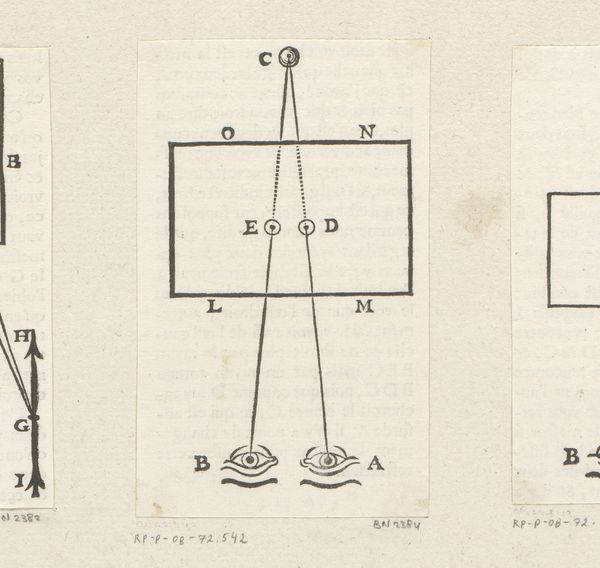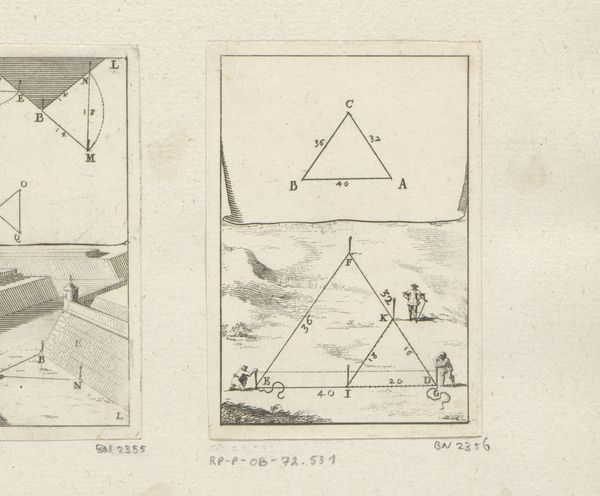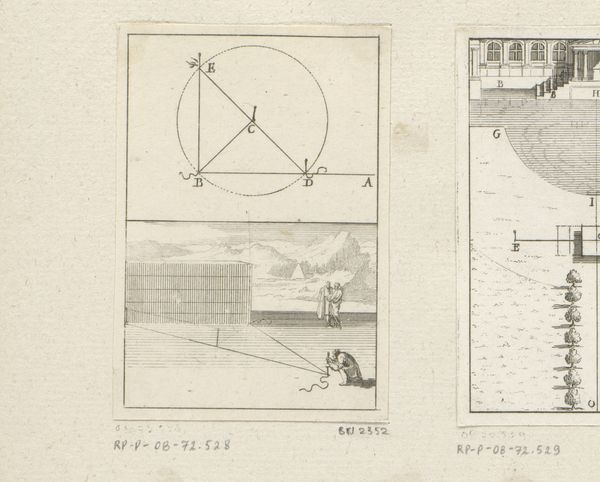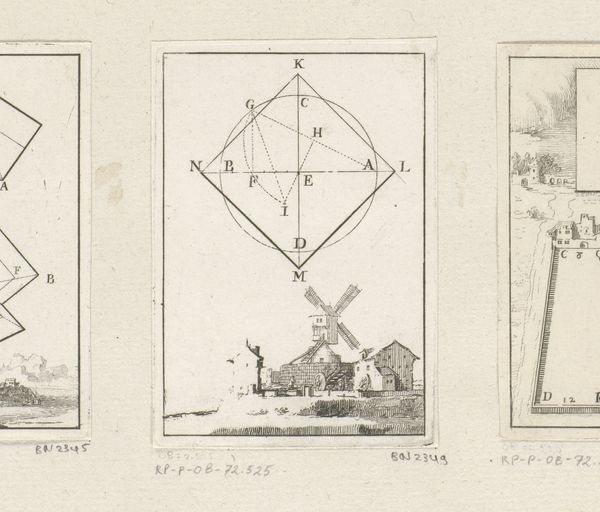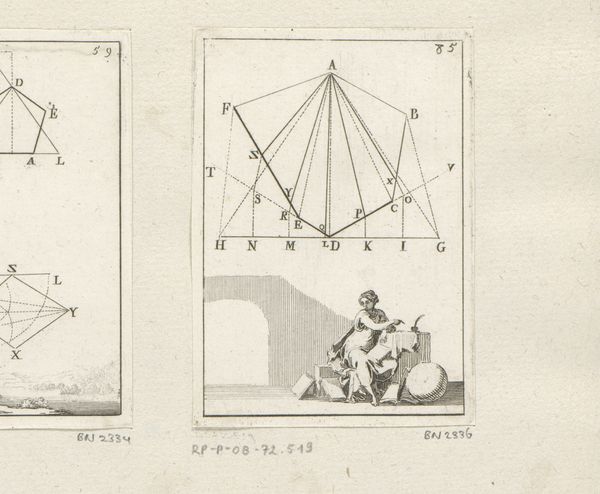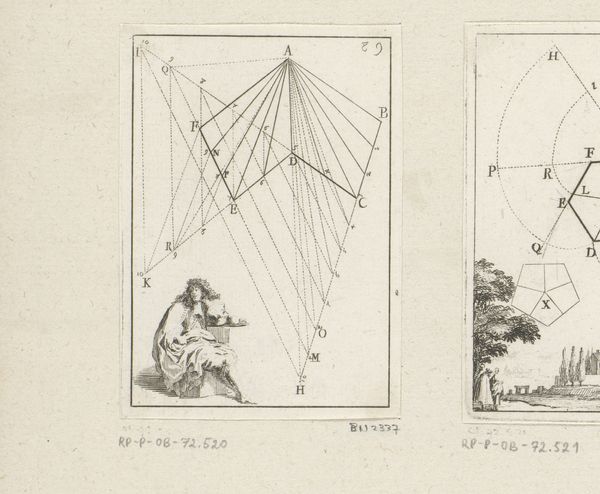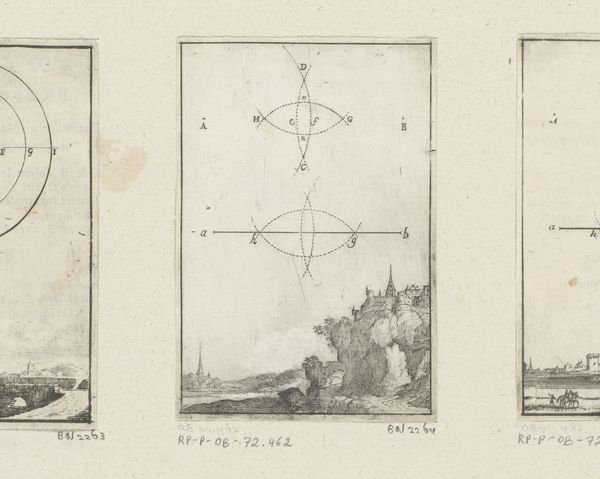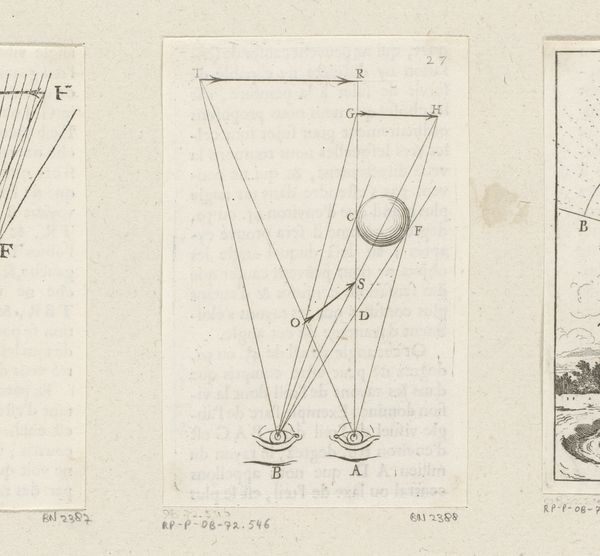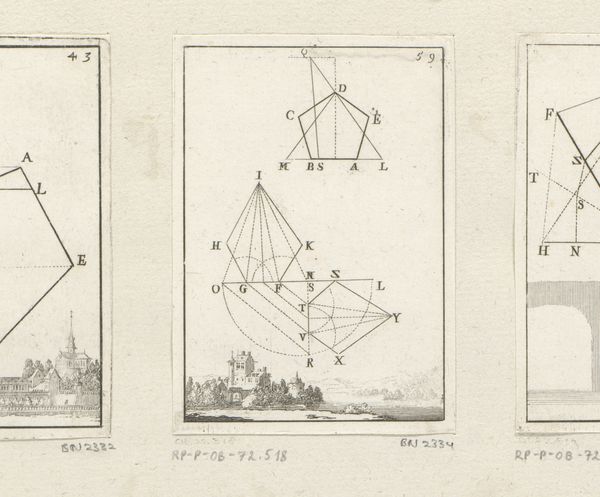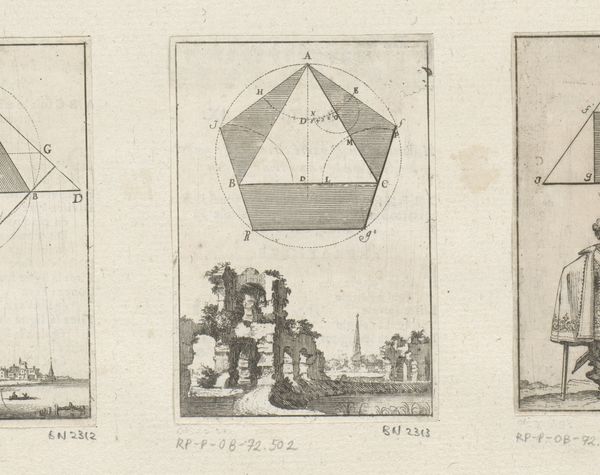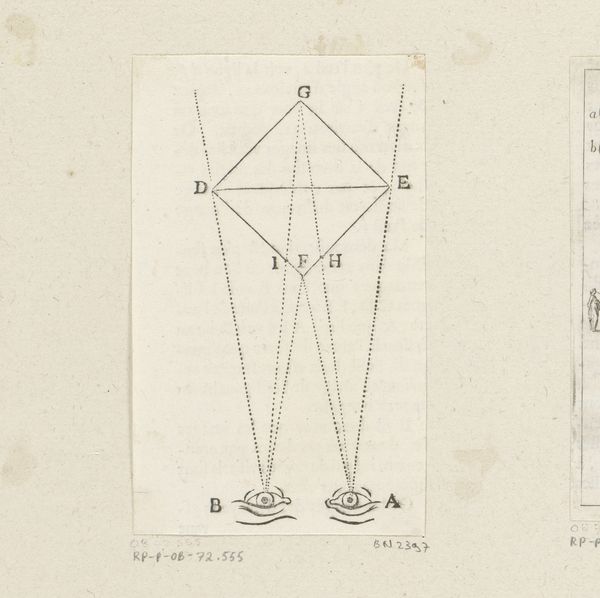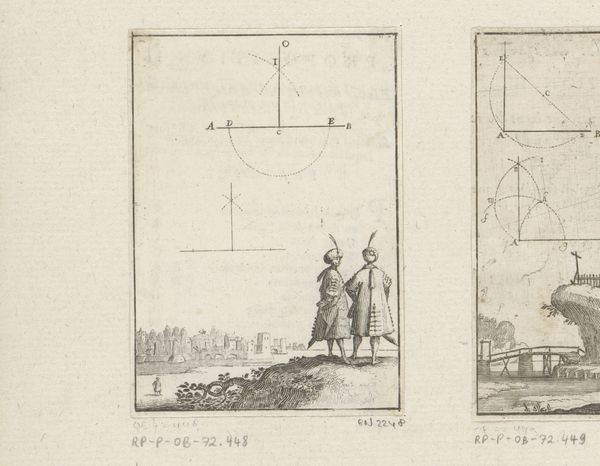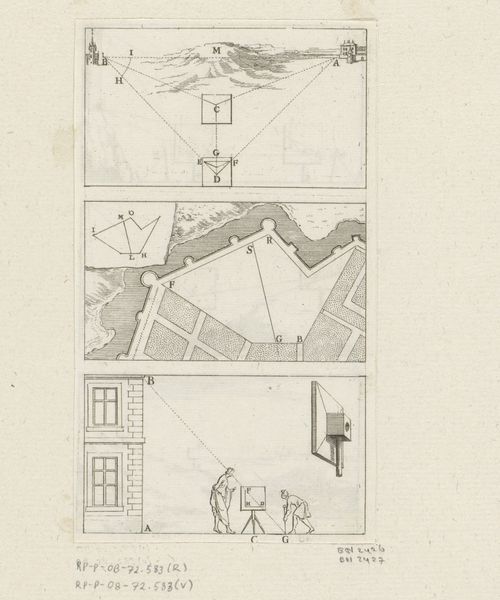
drawing, print, engraving, architecture
#
drawing
# print
#
perspective
#
geometric
#
line
#
academic-art
#
engraving
#
architecture
Dimensions: height 96 mm, width 66 mm
Copyright: Rijks Museum: Open Domain
Curator: This is "Lijn vanuit een punt die gelijke hoeken maakt met een muur," or "Line from a point that makes equal angles with a wall," an engraving by Sebastien Leclerc I, created around 1669. Editor: Immediately, it strikes me as…clinical. A kind of cool, rational beauty. It’s very precise and mathematical in its composition, like an equation visualized. Curator: Indeed. Look at the use of line—so clean and definitive. You see two distinct sections, don't you? The upper section meticulously charts geometric principles, illustrating the angle concept with labels. The lower image demonstrates the application in what looks like an architectural space. Editor: Yes, the lower panel. It has three figures, perhaps builders, enacting the theorem in this minimalist construction site. The work seems to celebrate rational thought in human endeavors like architecture, underscoring labor involved with precision. Who did the printing, and how did the laborers view such work? Curator: Leclerc, in creating this engraving, wasn't simply illustrating geometry. He was also engaging in the then-burgeoning culture of scientific visualization and instruction. Consider how prints like these were disseminated and consumed in workshops. Was this used solely in architecture, or could it be related to a wider labor division and scientific thought, such as clockmaking, where such perspectives mattered? Editor: The starkness of the lines emphasizes clarity of process, almost a desire for control and legibility within burgeoning economies of that era. What were the prevailing socio-economic conditions around the creation and reception of these prints? How does Leclerc's work engage with broader debates about technological innovation? Curator: Interesting questions! Remember, these images functioned as a tool. Its value was deeply tied to its ability to teach, inform, and standardize certain visual and constructional techniques. In this way, the print could bypass traditional training systems. Editor: Yes, this shifts perspective. I was struck by the almost dreamlike nature of rational thought. The stark setting with lone figures measuring points of precision raises many points on work and perspective, the social milieu and implications. This brings awareness of art and labor's connection. Curator: Right! The image acts as a portal into how seventeenth-century minds wrestled with issues of mathematical application, industrialization, and the increasing specialization of labor. Editor: This piece certainly gives insight into intersectionality! What can often seem a dry rendering of an artistic expression ends up highlighting the role between representation and broader historical conditions. Curator: Precisely! The simple rendering reminds us that sometimes the greatest artistic insights emerge from careful studies of art.
Comments
No comments
Be the first to comment and join the conversation on the ultimate creative platform.
